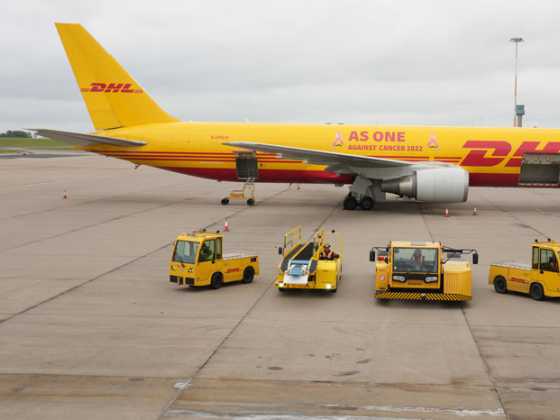Cleaning the air: what’s been done and what more is needed?

Many local authorities have been ordered to get their air pollution levels down to legal limits. But without national coordination and adequate funding, a patchwork of plans is emerging across the country. ClientEarth’s Dominic Phinn discusses the progress so far and what more is needed from local and national government
Every year, air pollution across the UK contributes to the equivalent of 40,000 early deaths and affects the lives of thousands of people who have no choice but to breathe dirty air.
Polluted air affects us all, but particularly the young, the elderly and other vulnerable members of society. The link between air pollution and a range of chronic health conditions such as strokes, cancer, heart and asthma attacks are well established.
We have recently seen reports published linking poor air quality to other forms of illness such as premature births and stunted lung growth in children. A study published last month in the Journal of Psychiatry, showed links between exposure to air pollution and mental health issues.
As the mountain of evidence exposing the ways that air pollution negatively impacts on our health continues to grow, it is inexcusable that air pollution remains at illegal levels across the country.
Illegal air quality plans and the ask of local authorities
Over the last twelve months, we’ve seen the publication of the long awaited Road to Zero strategy and more recently the Clean Air strategy. Such national attention is well overdue and welcome but these strategies lack ambition, binding targets and ultimately fail to illustrate how illegal and harmful levels of air pollution will be addressed.
As a result of successive government failures to deliver a lawful air quality plan, ClientEarth has been forced to take ministers to court. It has launched three successful legal challenges over the past eight years. As part of court-ordered national plans, government has directed 36 English local authorities to come up with their own proposals to tackle illegal levels of pollution in their areas in the shortest possible time.
In 2016, the High Court laid out the legal tests for air quality plans. These included the aim to achieve compliance as soon as possible; to choose a route to compliance which reduces human exposure as quickly as possible; and ensure that compliance with the limit values is not just possible, but likely.
Furthermore, it ordered that that ‘the determining consideration has to be the efficacy of the measure in question and not their cost’.
Local authorities – what have we seen so far?
Given the implications of delivering measures to meet these requirements, national coordination and significant funding is essential. Instead it has been all been left to local authorities that are already under strain and in many cases do not have the resources, expertise or policy levers to address the problem. Without national coordination and adequate funding, we are seeing a patchwork of plans emerging across the country.
For example, Oxford has backtracked on plans to ban private vehicles in their planned zero emission zone.
Southampton has reneged on its commitment to establish a Clean Air Zone.
Greater Manchester has announced that its Clean Air Zone will not include cars. There is concern that it will not meet legal limits in ‘the shortest time possible’. Elements of the Clean Air Zone will only come into force by 2023.
Derby submitted its business case to government last week and confirmed that it will not implement a Clean Air Zone.
A large number of local authorities, including those in Derby, Southampton, Newcastle, Manchester, Bristol and Bath seem to have missed legal deadlines for the production of final plans.
Bath has backtracked on its commitment to a Class D Clean Air Zone and is proposing a Class C Clean Air Zone for the city centre instead.
Rotherham and Sheffield have proposed a Class C Clean Air Zone.
Birmingham is showing leadership, opting for a Class D Clean Air Zone.
Leeds has committed to introducing a Class C Clean Air Zone.
Newcastle, Gateshead and North Tyneside consultation opened on the 4 March and includes consideration of a number of options including a Class D Clean Air Zone or a city centre Low Emission Zone with bridge tolls.
A wider problem
Air pollution is not of course an issue that only affects those regions that have been formally directed to deliver plans. There remain many areas across the country that fall outside the scope of these plans but where local authorities continue to measure pollution at levels above existing national air quality objectives. Furthermore, the vast majority of towns and cities in the UK suffer from levels of pollution that are above World Health Organisation guideline levels. To ensure that everyone’s health is protected, action is needed to reduce pollution across the country.
In July last year the Prime Minister committed to introduce new clean air legislation as part of the upcoming Environment Bill. This is a once in a generation opportunity to introduce new law enshrining stronger binding objectives on air quality that act to better protect people’s health and are at least in line with WHO guidelines. The legislation should establish clear duties to ensure that binding targets are not simply set and subsequently ignored, with responsibility lying with those most able to deliver pollution reductions at scale rather than simply relying on individual local authority commitments.
Responsibility lies with national and local government
It is clear that we need urgent action to tackle illegal levels of air pollution that are harming people across the country. Clean Air Zones are one of the most effective ways to do this but they need to be complemented by help and support, particularly to those on low incomes and small businesses, to move to cleaner forms of transport.
Responsibility lies with central government to provide funding and support to businesses and individuals. The scrappage scheme announced by the Mayor of London will help people and businesses to adjust to restrictions through the ULEZ. The £25 million that the mayor has committed to help low income families switch to cleaner vehicles needs to be matched by national government and scaled up as a national means tested scheme that is part-funded by the car industry. It should help businesses to purchase ultra-low or zero emission vehicles, or pay for a public transport season ticket, car club membership, bicycles, and so on.
We know that people are ready to consider low and zero emission alternatives if the price is right. Nearly two-thirds of motorists (61 per cent) say they would consider purchasing an electric or hybrid car when they next look to buy, according to a survey of over 20,000 AA members. However EV sales are not increasing at the rate predicted according to AutoTrader. We need to see changes to taxation such as to VED and company car tax to increase take up of cleaner vehicles. This has worked in Norway and the Netherlands, it is time that the UK showed the same leadership to match ambition with action.
While responsibility lies ultimately with national government, the plans from local authorities are also subject to the legal test set out by the courts in 2016. The lack of leadership from central government is inexcusable but it shouldn’t used by local authorities as reason to justify inaction and a watering down of measures that will result in plans failing to meet what is legally required of them.
The months ahead will be crucial and attention will be focused on all levels of government to make sure that plans submitted are effective in finally protecting people’s health.






